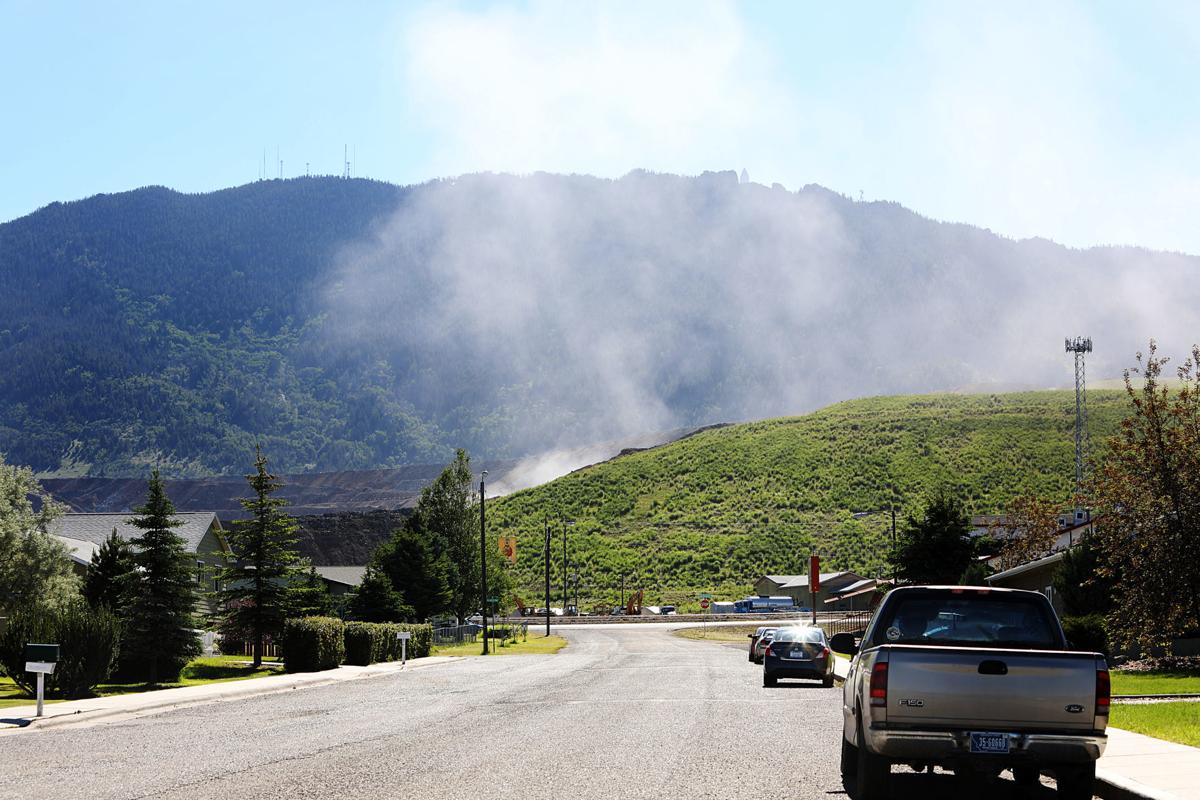By Derf Johnson
 Dust from a blast at Montana Resources’ open-pit mine in 2018. Photo by Megan Thompson.
Dust from a blast at Montana Resources’ open-pit mine in 2018. Photo by Megan Thompson.
More than anything, Butte is known for mining. It’s so deeply ingrained in the identity of Butte that the two are effectively synonyms. Mining is not just the legacy of the city’s past but is also its present and likely future.
What many people don’t know is that Butte also has a currently operating mining company. Montana Resources extracts molybdenum and copper in the Continental Pit, an open pit east of Uptown, and plans to continue operations for the foreseeable future.
Due to geohistorical development and historic underground mining (requiring a large workforce), Butte is located adjacent to both historical and currently active mine areas. This is especially true in the Greeley Neighborhood, just south of the Berkeley Pit and literally right across the street from the active Montana Resources mine.
As you can imagine, having your home or business across the street from a very large hardrock mining operation can have serious negative consequences. In particular, Greeley community members have protested the large amount of dust coming from the mine site for years. The dust is kicked up by massive haul trucks; the crusher processing the unrefined ore; the large surface area of exposed, barren land; and current and historic mining waste being managed at the nearby Yankee Doodle Tailings Pond. A few years ago, Montana Resources and the Butte Silver-Bow (BSB) local government took a step toward evaluating the issue by conducting an air quality analysis of potential impacts.
The results of the Montana Resources/BSB air quality study, released publicly in May 2021, concluded that the air was safe. However, on closer review, the methodology that led to the results raised more questions than answers. Due to concerns, the Greeley Neighborhood Community Development Corporation and MEIC retained an air quality expert, Dr. Ron Sahu, to provide a critical, independent eye and evaluate the conclusions of the study and the assumptions that went into the analysis.
On May 17, 2022, Dr. Sahu presented his analysis and professional critique to the BSB Health Study Advisory Committee. Dr. Sahu identified a number of shortcomings and faulty assumptions with the research. He ultimately concluded that the air quality analysis results could not determine whether the community was being impacted nor whether the air quality was healthy. Dr. Sahu noted that the analysis did not include the mine operation and emissions data, which significantly hampered the analysis and ignored whether contemporary mining was contributing to air pollution. He also noted a series of “chain of custody” issues, concerns over the monitoring site, data intentionally omitted from the analysis, and finally the inappropriate comparisons to standards and data from other parts of the world.
Dr. Sahu offered a number of recommendations for moving forward, including that Montana Resources and BSB collect data coupled with information about the mine’s activities to better determine the active mine’s impacts on the community. He also
suggested the Health Study Advisory Committee administer any future research through an independent third party and set up a steering committee of diverse local stakeholders (or further empower the Health Study Advisory Committee) to oversee this research and activity.

The Health Study Advisory Committee is currently evaluating Dr. Sahu’s findings and recommendations. Based upon statements during Dr. Sahu’s presentation, it is apparent that Montana Resources seems willing to provide resources to address a number of issues. However, the Committee doesn’t plan on meeting again until August, and some members sounded skeptical about conducting additional analyses to determine whether the Greeley Neighborhood was truly safe. In the meantime, Greeley residents continue to live, work, and play in potentially polluted air and metal-laden accumulated dust from the active mining operation next door. Understandably, they’re less interested in talk and more interested in action.
MEIC will continue to monitor and evaluate the actions or inactions of the Health Study Advisory Committee and to advocate for clean air in the Greeley Neighborhood and Butte. The residents of Greeley and Butte, like the rest of Montana, deserve to breathe clean air, and have credible assurance that their industrial neighbors and local government are considering and safeguarding their health.
This article was published in the June 2022 issue of Down To Earth.

